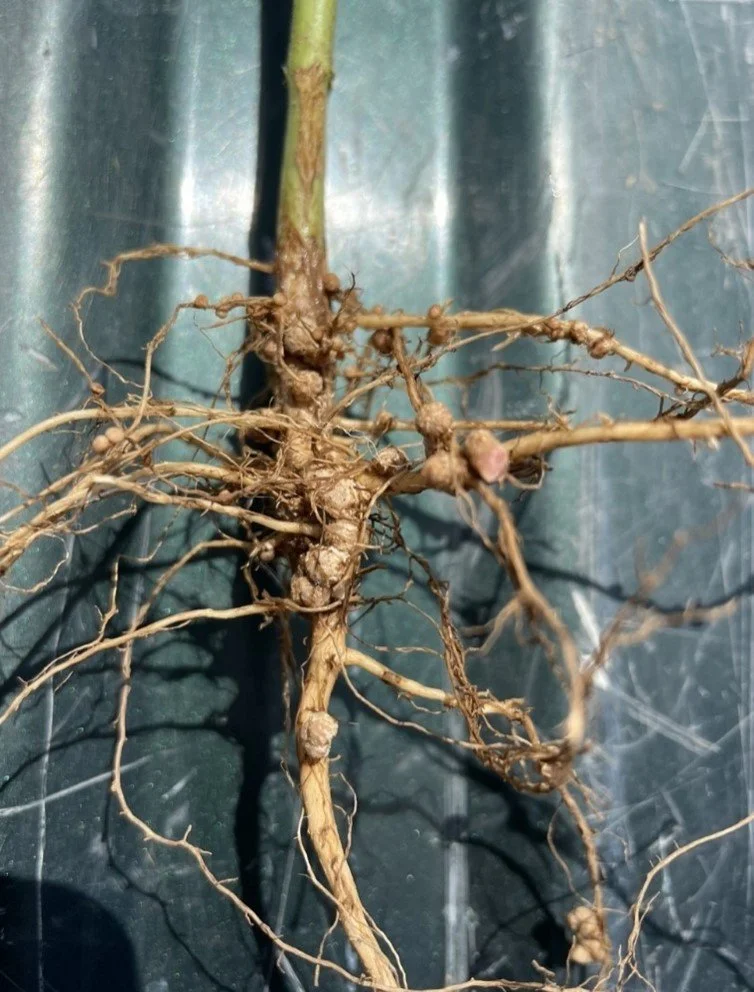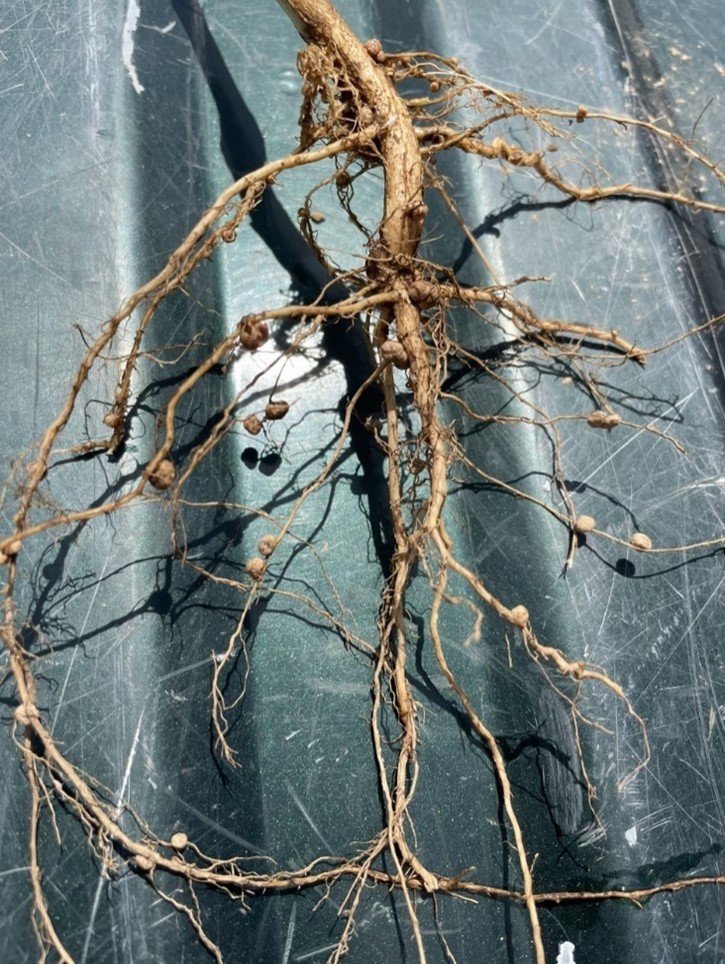Soybean Nodulation During A Hot Dry Summer
Conner Raymond; Grain Crops Extension Associate, Princeton, KY
Dr. Lloyd Murdock; Professor Emeritus, Princeton, KY
Soybean plants require 3.5 to 5 pounds of nitrogen to produce one bushel of grain. That is 210 to 300 pounds per acre of nitrogen for a 60 bushel per acre yield. With such high nitrogen requirements, it is important that soybean plants produce enough root nodules to supply the majority of the plant’s nitrogen needs. Environmental factors, including drought and soil temperatures at or above 90°F, can significantly decrease the plants’ ability to produce root nodules. Excessive temperatures reduce the viability of the bacteria that infects the roots and makes nodules. The dry conditions also reduce the efficiency of the nodules to produce nitrogen. During June and the first half of July, the majority of Kentucky’s grain-producing areas experienced these conditions that could have potentially inhibited root nodulation. It was especially hot when the double-cropped soybeans were being planted into the wheat straw.
If conditions are good, nodulation will begin on the taproot about 2 weeks after emergence. Nodules should be easily visible and 5 to 7 should be on the primary root two weeks after emergence and a total of 8 to 20 large (2mm – 4mm) nodules before flowering. Nodules will continue to grow in size until R5 growth stage.
The high temperatures this year at planting and early growth reduced early nodulation on double-cropped soybean plants. As can be seen in picture 3, nodulation on the taproot of this double-cropped soybean plant is reduced and does not have the 5 to 7 nodules that would indicate early and good nodulation. As temperature and moisture conditions improved, nodulation became prominent on the secondary roots and of sufficient number and size to produce the needed nitrogen. This probably resulted in a lower early nitrogen supply to the plant and may be one of the causes of a little slower early growth. In some areas of the fields nodulation was normal, as seen in picture 2, where several large nodules are seen on the taproot.
Five to six weeks after planting is the ideal time to check soybean plants for nodulation. Start by digging at least 10 plants from representative areas of the field, do not pull plants because the majority of the root system and nodules will be damaged or left in the soil. After plants have been dug, remove excess soil and wash carefully in water. Nodules that are actively providing nitrogen to the plants will be a pink to red or “beef steak” color when split open as seen in picture 1. Nodules that appear white are immature and should be checked one week later, while green or brown mushy nodules are not fixing nitrogen.
Although nodulation was delayed on many double–cropped soybean plants, nodulation became plentiful and early enough for adequate nitrogen production for a good crop.
Resources:
Conner Raymond, Grains Extension Associate
Dept of Plant and Soil Science
348 University Dr. Princeton KY, 42445
Dr. Lloyd Murdock, Emeritus Professor
Dept of Plant and Soil Science
348 University Dr. Princeton KY, 42445
Picture 1: Shown is the pink to red “Beef Steak” color of an active soybean root nodule split in two
Picture 2: Proper nodulation shown on the tap root of a soybean plant. Eight 2-4mm nodules can be seen.
Picture 3: Lateral roots of a soybean plant showing proper nodulation



